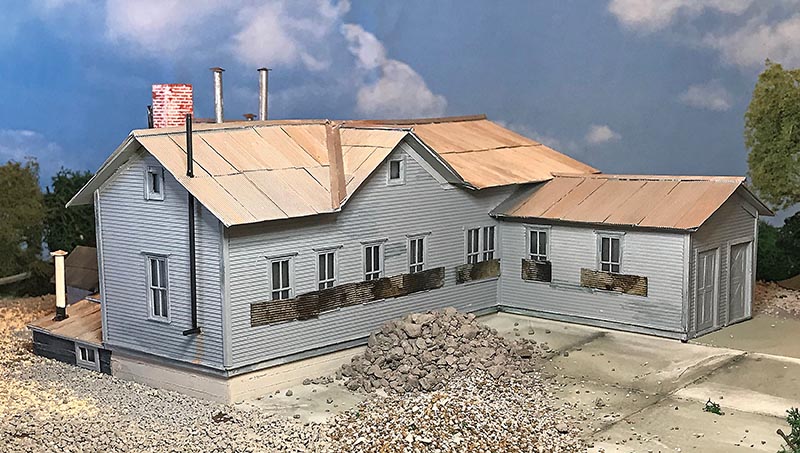In the 1970s we made several trips-family vacations to Michigan’s Upper Peninsula to explore the remains of the Quincy & Torch Lake Railroad. The Q&TL was a narrow gauge railroad that moved copper-bearing “rock” from the Quincy mine to the stamp mills then transferred the concentrate via standard gauge to the Quincy smelter. One magazine article described it as “forgotten by time” since the railroad ceased operation in 1945 after the wartime copper subsidies were withdrawn. No wheels had turned since then. Locomotives sat in the engine house and a metal part lingered in a vice ready to be machined. I almost drifted back to the year I was born.
One special visit was with the late Al Henning on a tour of the Superior Mining District sponsored by the Society for Industrial Archeology (SIA). Guides were often retired workers who knew the sites intimately. We were allowed deep into a Quincy Mine “addit” or side ventilation shaft where mining students from the Michigan Tech School of Mines were drilling and blasting. For me, the highlights were inside tours of the buildings at the mine and the Quincy smelter on Portage Lake. Places into which I could never go. You can still visit some of these sites today as the area is now a National Park.
Being a chemistry professor, my special interest was the assay office at the smelter. I took many photos and measurements which, after only a 50-year hiatus, allowed me to create the model for this article. The building today is still filled with crushers, mills, furnaces and the tools needed to process large numbers of samples each day. Friend Chuck Pomazal even took a recent video of the intact interior which I did not model, but was a delicious tour for a chemist to view.
You can find complete information about the Quincy Mining Co. and the Superior Mining District in the Historic American Engineering Record (more than 200 photos and drawings) at the Library of Congress. The mine operated from 1846 to 1945. I’ve included a gallery of my black and white photos mostly from the 1970s.
At one time, samples would be delivered directly to the garage-like append-age by an in-plant 2-foot-gauge railroad. That would be a nice feature to add.
The HO model follows my drawings using Evergreen clapboard siding and San Juan windows and doors. Without the big vent stacks, the finished building could have other uses, like a yard or mill office. Just change the materials surrounding it. If you study the pictures there are still many little details, like electric lines, boarded up windows, and strange chunks of wood that could be added.
My very special thanks to Chuck Pomazal author of Rock Down, Coal Up: The Story of the Quincy & Torch Lake Railroad for all his technical help. My memories of special dinners and trips with the late Al and Gert Henning are the reason this model could even be built. The late mine manager, Louis Koepel was always most professional and accommodating on our visits. And, of course, thanks to my wife, Mary Cay, and our sons for splashing around in the pool at the Copper Crown motel while I explored Quincy Hill.




